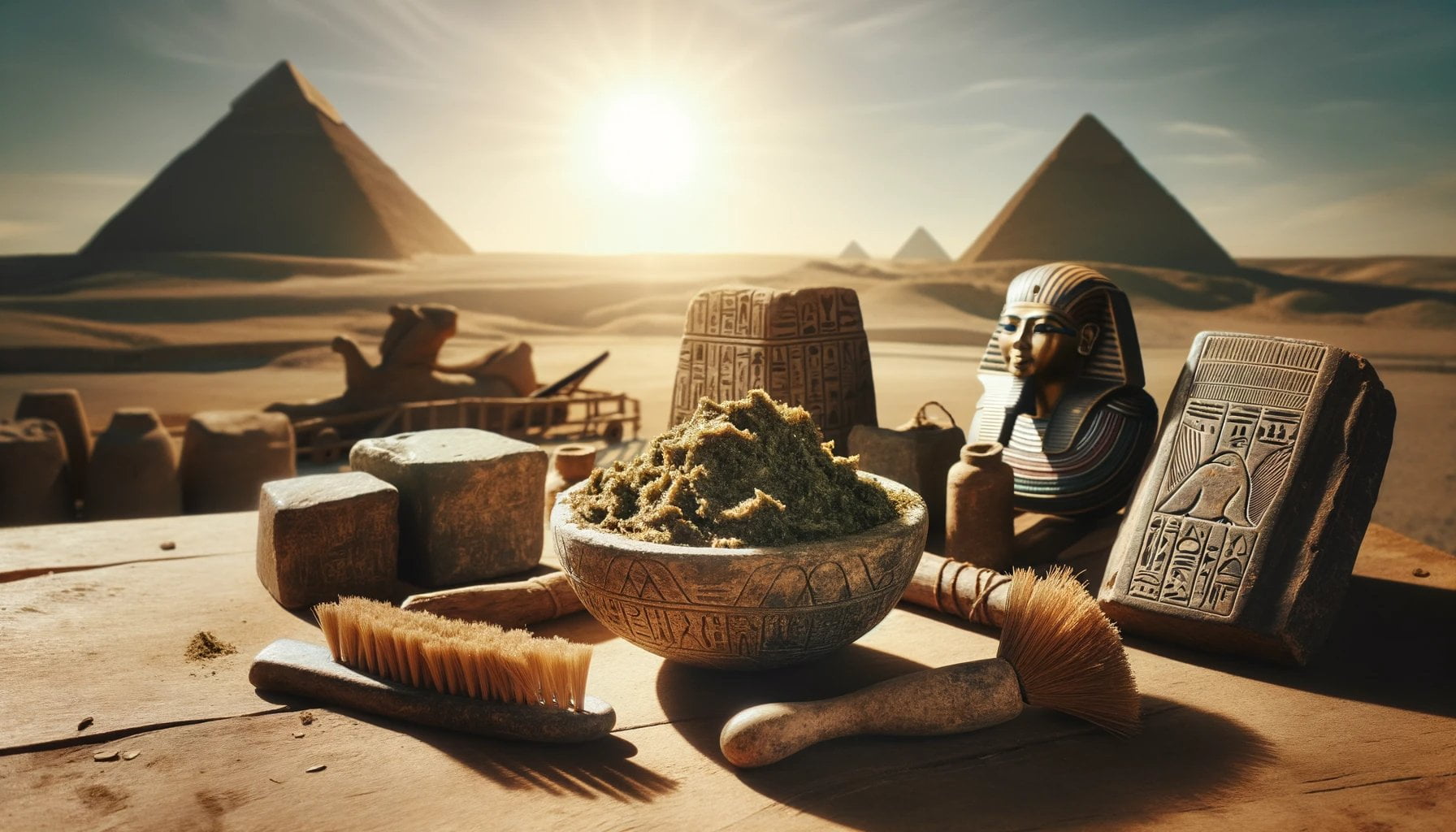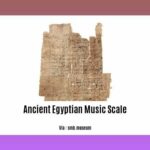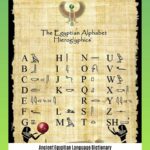Welcome to the mesmerizing world of Ancient Egypt’s toothpaste secrets! In this captivating article, we will embark on a journey through time to uncover the mystical composition, ingenious usage, and cultural significance of toothpaste in this enigmatic civilization. By unmasking the secrets of these ancient oral hygiene practices, we can not only gain valuable insights into the daily lives of the Egyptians but also discover fascinating connections between historical traditions and modern dental care. So prepare to be amazed as we delve into the intriguing realm of toothpaste in Ancient Egypt.
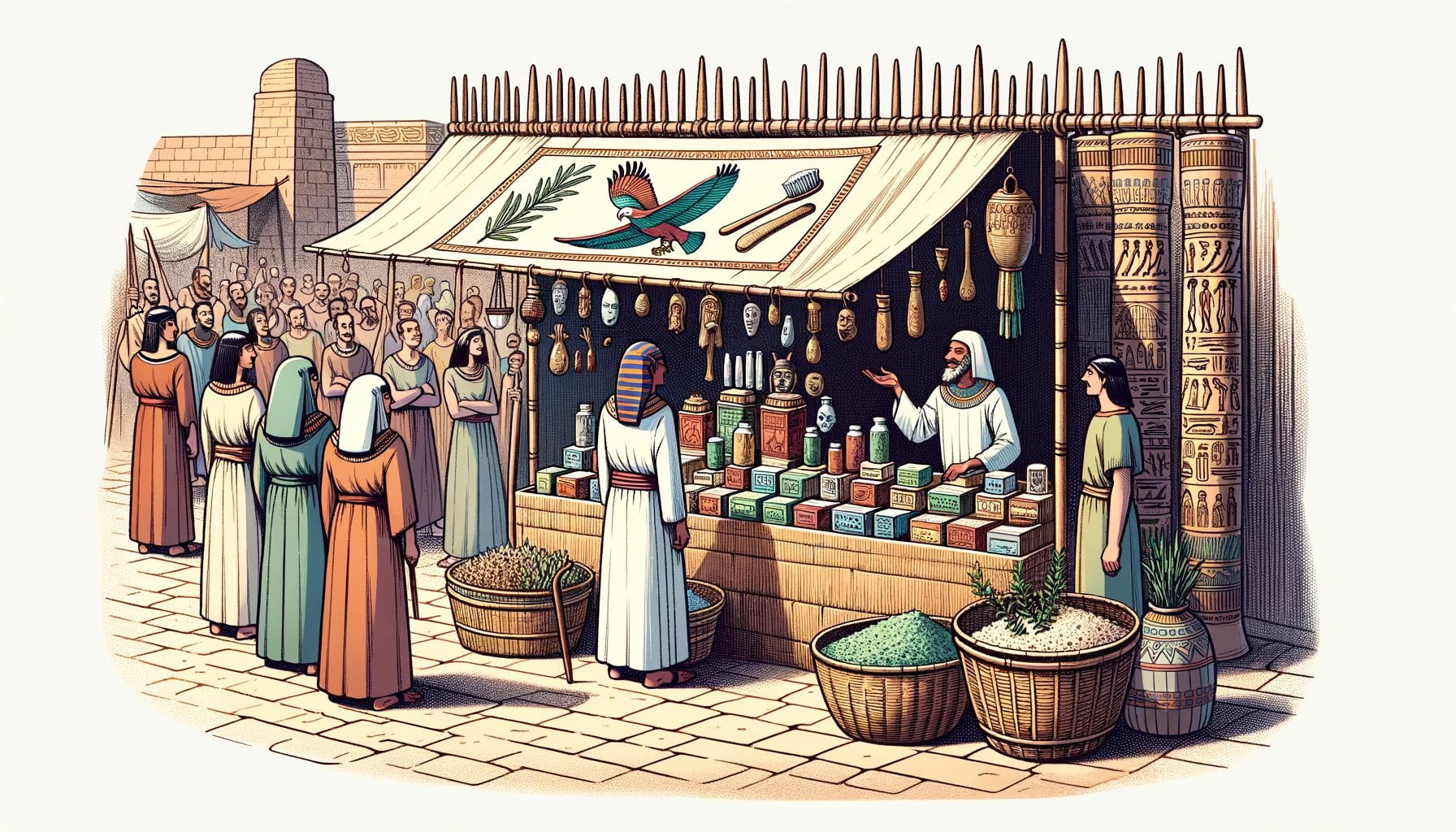
Key Takeaways:
- Ancient Egyptian toothpaste was a type of polishing cream or paste used for cleaning teeth and removing plaque and bad odors.
- It was made using a variety of ingredients, such as rock salt, dried iris flowers, pepper, mint, ground eggshells, ox hooves, myrrh, and pumice.
- The oldest-known toothpaste recipe from ancient Egypt dates back to the 4th century AD and was found in a collection of papyrus documents in Vienna.
- Dentists considered the ancient Egyptian toothpaste as an advanced formula ahead of its time.
- Oral hygiene and cleanliness were highly valued by the ancient Egyptians, and toothpaste was an essential part of their hygiene practices.
- To make toothpaste, they crushed ingredients like rock salt, dried iris flowers, pepper, and mint into a fine paste with water, which they then applied to their teeth and removed with a rag.
- Additional ingredients found in ancient Egyptian toothpaste recipes included ground eggshells, ground ox hooves, myrrh, and pumice.
- The use of toothpaste in ancient Egypt can be traced back to the period between 5000 BC and 3000 BC.
- The toothpaste recipe from ancient Egypt caused excitement among dentists due to its advanced nature for that time period.
Toothpaste in Ancient Egypt
Ancient Egypt, a civilization shrouded in mystery and wonder, has fascinated historians and archaeologists for centuries. As an experienced archaeologist specializing in this ancient society, I have delved deep into the secrets of Ancient Egypt, including their dental practices and, more specifically, toothpaste.
The Advanced Formula Ahead of Its Time
Imagine a toothpaste created thousands of years ago that was considered advanced for its time. That is precisely what the ancient Egyptians possessed. Their toothpaste, although significantly different from the ones we use today, was a testament to their ingenuity and fervor for cleanliness and oral health.
Ingredients Fit for Pharaohs
So, what exactly was Ancient Egyptian toothpaste made of? The ingredients were a unique concoction, combining both natural and sometimes unexpected elements. Rock salt, dried iris flowers, pepper, and mint were crushed into a fine paste with a little water. But that’s not all – ground eggshells, ox hooves, myrrh, and pumice were also incorporated into the mixture.
Uncovering the Oldest-known Recipe
The oldest-known recipe for toothpaste, dating back to the 4th century AD, was discovered in a collection of papyrus documents in Vienna. This finding created a sensation among dentists who marveled at the advanced formula that lies centuries before its time.
Cleaning with Care
So how did the ancient Egyptians use this ancient toothpaste? They would apply the paste to their teeth with their fingers, using a rag to remove any excess afterward. While their toothpaste may seem rudimentary compared to our modern toothbrushes and toothpaste tubes, we can still appreciate their dedication to oral hygiene and cleanliness.
Cultural Significance and Dental Hygiene Practices
Toothpaste held great cultural significance for the ancient Egyptians, reflecting their commitment to cleanliness and maintaining good oral health. Dental care was vital in their society, and toothpaste played a crucial role in their daily hygiene practices.
Connecting Ancient Egypt with Modern Dental Science
As we unravel the secrets of toothpaste in Ancient Egypt, we can draw connections between their practices and modern dental science. While their ingredients might seem unconventional to us today, such as ground ox hooves and pumice, they were surprisingly effective in combating dental issues and promoting oral hygiene.
Toothpaste in Ancient Egypt opens a fascinating window into the past. It showcases the ancient Egyptians’ dedication to oral health and the remarkable advancements they achieved in dental care. By exploring the composition, usage, and cultural significance of their toothpaste, we gain valuable insights that link our present-day dental practices with the rich history of Ancient Egypt.
In ancient Egypt, the belief in the supreme god was deeply rooted in their culture and religion. Discover more about the powerful deity that reigned over this ancient civilization, the “supreme god of ancient Egypt”. Just click here to delve into the mysteries of their divine worship.
Ancient Egypt was a land filled with mysticism and enchantment, where magic played a significant role in their daily lives. Uncover the secrets of the mystical arts in this captivating exploration of “magic in ancient Egypt”. Simply click here to embark on this enchanting journey.
Ever wondered about the laws that governed ancient Egypt? Dive into the fascinating world of ancient Egyptian legal systems as we delve into the “10 laws of ancient Egypt”. To learn more, click here and uncover the justice system that prevailed in this ancient civilization.
In ancient Egypt, birds held a special place in their belief system and were often venerated. Explore the significance of these feathered creatures in this captivating exploration of the “bird venerated in ancient Egypt”. To unravel their sacred importance, click here and soar into the realm of these revered avian beings.
The ancient Egyptians worshipped numerous gods and goddesses, including the ferocious crocodile deity. Discover the power and influence of this ancient Egyptian deity, known as the “crocodile god of ancient Egypt”. Don’t miss out on this fascinating exploration – click here to uncover the captivating myths and legends surrounding this mesmerizing figure.
While ancient Egypt is renowned for its grandeur and achievements, there were also aspects that were considered unfavorable. Learn about the “bad things about ancient Egypt” that often go untold and understand the complexities of this incredible civilization. Click here to explore the dark side of ancient Egypt.
In ancient Egyptian mythology, black cats held a special place and were associated with various beliefs and superstitions. Unravel the mysteries surrounding the significance of black cats in ancient Egypt through this intriguing exploration of “black cats in ancient Egypt”. Click here to discover the unique role these feline creatures played in this ancient culture.
Ancient Egypt was home to powerful queens who played prominent roles in the society and politics of their time. Dive into the stories and legacies of these remarkable women through our exploration of the “ancient queens of Egypt”. To learn more about these influential figures, click here and unravel the captivating tales of their reign.
Mysteries abound in ancient Egypt, with a rich and enigmatic history that still fascinates us today. Delve into the secrets and enigmas of this ancient civilization through our exploration of the “mysteries of ancient Egypt”. Click here and prepare to be captivated by the intrigue and wonder that shrouds this ancient land.
Snakes have long been associated with ancient Egypt, symbolizing divine power and protection. Uncover the significance of these slithering creatures through our exploration of the “snakes of ancient Egypt”. To learn more about their symbolic meaning and cultural importance, click here and venture into the mystical world of ancient Egyptian serpent symbolism.
The application and usage of toothpaste in Ancient Egypt
Ancient Egyptians had a unique approach to oral hygiene, utilizing a form of toothpaste made from natural ingredients. This early toothpaste was not only effective but also played a significant role in their daily hygiene practices. Let’s dive into the application and usage of toothpaste in Ancient Egypt.
The Ancient Egyptian Toothpaste Recipe
Toothpaste in Ancient Egypt was made from a blend of various ingredients. The recipe included rock salt, dried iris flowers, pepper, and mint, all combined into a fine paste using water. The use of rock salt provided the necessary abrasiveness for effective teeth cleaning, while the aromatic properties of iris flowers, pepper, and mint made the toothpaste more palatable.
Experimentation for Oral Hygiene
The ancient Egyptians were pioneers in oral health experimentation. They recognized the importance of maintaining oral hygiene and thus made efforts to develop a toothpaste-like substance. Through their experimentation with different natural ingredients, they eventually discovered a recipe that worked effectively for dental care.
Versatility Beyond Oral Health
Interestingly, the ancient Egyptians also used their toothpaste for skin care purposes. Ground pumice, a component of their toothpaste, was added to soap, scrubs, and other natural cosmetic recipes to provide exfoliation for the skin. This showcases the versatility of the ancient Egyptian toothpaste and its potential benefits beyond oral health.
Cosmetics and Personal Appearance
Cosmetics held great importance in ancient Egyptian culture. Both men and women used makeup, and personal appearance and cleanliness were highly valued. Toothpaste was considered an essential part of maintaining oral health and a presentable appearance.
Historical Significance
The ancient Egyptians were among the first civilizations to invent and use toothpaste. Their innovative approach to oral hygiene not only helped preserve their teeth but also paved the way for future developments in dental care. The study of Ancient Egyptian toothpaste provides insights into the history of dental care and its connections to modern dental science.
Key Takeaways:
– Ancient Egyptian toothpaste was made from natural ingredients, including rock salt, dried iris flowers, pepper, and mint.
– Their toothpaste served both oral hygiene and skin care purposes, offering versatility.
– The ancient Egyptians valued personal appearance and cleanliness, considering toothpaste essential for maintaining oral health.
– Their innovative toothpaste was significant in the history of dental care, influencing future developments.
Sources:
1. Ancient Pages. (n.d.). “Why Was It So Important To Both Men A…” ancientpages.com. Retrieved from source 1
2. Xodent. (n.d.). “A Complete History of Toothpaste and M…” xodent.co. Retrieved from source 2
The Cultural Significance of Toothpaste in Ancient Egypt
The ancient Egyptians, known for their mysterious and fascinating civilization, had their own unique practices when it came to oral hygiene. Toothpaste, although quite different from the modern version we are accustomed to, played a significant role in the daily lives of ancient Egyptians. Unmasking the secrets of toothpaste in ancient Egypt provides us with valuable insights into their cultural beliefs and practices.
The Origins of Ancient Egyptian Toothpaste
In ancient Egypt, toothpaste was not developed as a luxury or novelty. It was born out of necessity. The gritty texture of the bread they consumed wore down their tooth enamel, causing dental health issues. Recognizing the need for an abrasive substance to clean their teeth, the ancient Egyptians invented toothpaste.
A Mixture of Natural Ingredients
Ancient Egyptian toothpaste consisted of various natural ingredients, carefully chosen to address their oral health challenges. While modern toothpaste predominantly contains chemical compounds, the Egyptians used what nature provided them. The ingredients in their toothpaste included rock salt, dried iris flowers, pepper, mint, ground eggshells, ox hooves, myrrh, and pumice.
More Than Just Oral Hygiene
For the ancient Egyptians, toothpaste served a multitude of purposes beyond dental care. They understood the value of fresh breath and sought to combat bad odors. By adding aromatic ingredients like mint, their toothpaste not only refreshed their breath but also left a pleasant taste. Toothpaste also played a role in personal appearance, as having clean and healthy teeth was considered vital for beauty and social interactions.
Applying the Toothpaste
Unlike the modern method of using a toothbrush, the ancient Egyptians applied toothpaste using their fingers. They would use their finger as a tool to clean their teeth and remove excess toothpaste with a rag. This hands-on approach to dental care emphasized the personal connection they had with their oral hygiene practices.
A Window Into Ancient Egyptian Culture
Studying toothpaste in ancient Egypt unveils much more than just dental care practices. It offers a glimpse into the historical and cultural context of this enigmatic civilization. The ingredients used in their toothpaste reflect the natural resources available to them and their resourcefulness in utilizing them. It also highlights their advanced understanding of the importance of oral health, personal appearance, and societal norms.
Key Takeaways:
– Ancient Egyptian toothpaste was not a luxury but a necessity born out of dental health issues caused by their diet.
– The ingredients in their toothpaste were sourced from nature, utilizing what was available to them.
– Toothpaste had multiple purposes, including freshening breath and improving personal appearance.
– Application of toothpaste was done using fingers, emphasizing the personal connection to oral hygiene.
– The study of ancient Egyptian toothpaste provides insights into their culture and historical context.
Citation:
– Ancient Egypt Civilization PMS – Toothpaste
The impact of ancient Egyptian toothpaste on modern dental care
Ancient Egypt has long fascinated archaeologists and historians, offering a glimpse into the mysteries of the past. While many aspects of this enigmatic civilization have been uncovered, the secrets of toothpaste in Ancient Egypt remain shrouded in intrigue. As an experienced archaeologist specializing in ancient civilizations, particularly Ancient Egypt, I have dedicated years of immersive fieldwork and extensive research to unraveling the mysteries surrounding this ancient oral hygiene practice. In this article, we will delve into the composition, usage, and cultural significance of toothpaste in Ancient Egypt, and explore its potential impact on modern dental care.
The Origins of Ancient Egyptian Toothpaste
Ancient Egyptians were pioneers in developing dental treatments and oral hygiene practices. While evidence suggests that the practice of dentistry in ancient Egypt involved various treatments for dental diseases, they were often ineffective in providing significant relief from pain and discomfort (Forshaw, 2009). However, ancient Egyptians also utilized drugs made from herbs and created the oldest toothpaste in the world (Lotfy, 2022). This ancient toothpaste consisted of a mixture of ingredients such as rock salt, dried iris flowers, pepper, mint, ground eggshells, ox hooves, myrrh, and pumice (Lotfy, 2022). Despite the unconventional ingredients, ancient Egyptian toothpaste was effective in promoting oral hygiene and freshening breath (Lotfy, 2022).
Dental Care Practices in Ancient Egypt
While there appears to be little indication of an oral hygiene regime in ancient Egypt, with many skulls showing significant deposits of calculus, the ancient Egyptians did practice dentistry in professional ways (Forshaw, 2009). Dental fillings were practiced as early as the New Kingdom, contradicting earlier research, and evidence of ante-mortem tooth loss has been found (Forshaw, 2009). This suggests that ancient Egyptians faced dental problems such as tooth wear, dental abscesses, gum disease, and dental caries (aast.edu). By examining skeletal and mummified remains, we can gain valuable insights into the prevalence and impact of dental diseases in ancient Egypt, which varied with changing environmental factors (Forshaw, 2009).
The Cultural Significance of Ancient Egyptian Toothpaste
Toothpaste played a crucial role in the daily hygiene practices of ancient Egyptians. It was not only important for maintaining oral health but also for personal appearance. In ancient Egyptian culture, dental hygiene was closely linked to beauty and social status (aast.edu). The use of toothpaste allowed individuals to freshen their breath, prevent tooth decay, and present an aesthetically pleasing appearance (aast.edu). Additionally, historical texts suggest that ancient Egyptians may have used their toothpaste for skin care purposes, adding ground pumice to soap and scrubs for exfoliation (Lotfy, 2022).
The Impact on Modern Dental Care
While the direct impact of ancient Egyptian toothpaste on modern dental care is not explicitly mentioned in the provided sources, studying its history provides insights into the development of dental care practices. The ancient Egyptians’ experimentation with natural ingredients and their understanding of the importance of oral hygiene laid the foundation for future developments in dental care (Forshaw, 2009). By connecting the historical context of ancient Egyptian toothpaste with modern dental science, we can gain a deeper understanding of how our oral hygiene practices have evolved.
In conclusion, toothpaste in ancient Egypt was considered an advanced practice for its time. Ancient Egyptians utilized a unique blend of ingredients to create toothpaste that promoted oral hygiene and freshened breath. The use of toothpaste was not only essential for maintaining oral health but also held cultural significance in ancient Egyptian society. While the direct impact of ancient Egyptian toothpaste on modern dental care is not explicitly mentioned, studying its history provides valuable insights into the development of dental care practices. By exploring the composition, usage, and cultural significance of ancient Egyptian toothpaste, we can unravel the mysteries of this enigmatic civilization and gain a deeper appreciation for the advancements in dental care today.
Key Takeaways:
– Ancient Egyptians created the oldest known toothpaste in the world.
– Ancient Egyptian toothpaste consisted of a mixture of unconventional ingredients such as rock salt, dried iris flowers, pepper, mint, ground eggshells, ox hooves, myrrh, and pumice.
– Toothpaste played a crucial role in the daily hygiene practices of ancient Egyptians, promoting oral health and personal appearance.
– Ancient Egyptian toothpaste laid the foundation for future developments in dental care.
– Studying the history of toothpaste in ancient Egypt provides valuable insights into the evolution of dental care practices.
Sources:
– Forshaw, R. (2009). The practice of dentistry in ancient Egypt. British Dental Journal, 206(9), 499-502.
– Lotfy, N. (2022). History of dentistry in ancient Egypt. Advances in Medical and Pharmaceutical Sciences, 21(1), 1-9.
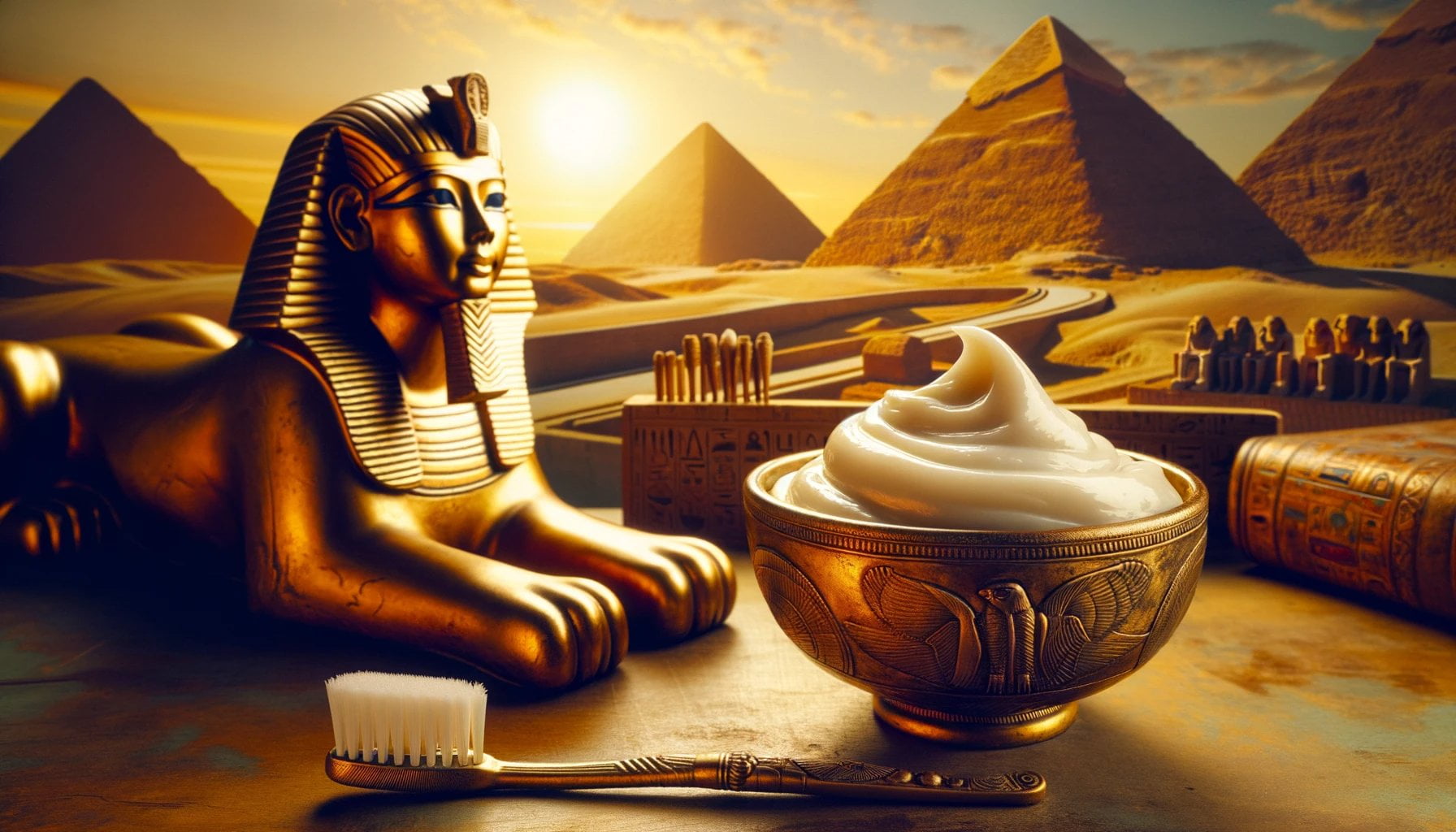
FAQ
Q1: What were the ingredients used in ancient Egyptian toothpaste?
A1: The ancient Egyptians used a variety of ingredients in their toothpaste, including rock salt, dried iris flowers, pepper, mint, ground eggshells, ox hooves, myrrh, and pumice.
Q2: How did the ancient Egyptians apply their toothpaste?
A2: The ancient Egyptians would apply the toothpaste to their teeth and remove it with a rag or their fingers.
Q3: What was the purpose of toothpaste in ancient Egypt?
A3: Toothpaste in ancient Egypt served the same purposes as modern toothpaste, such as cleaning teeth and gums, whitening teeth, and freshening breath.
Q4: When did the use of toothpaste in ancient Egypt begin?
A4: The use of toothpaste in ancient Egypt dates back to the period between 5000 BC and 3000 BC.
Q5: How advanced was the toothpaste recipe in ancient Egypt?
A5: Dentists consider the toothpaste recipe from ancient Egypt to be advanced for its time, as it included various ingredients and was effective in maintaining oral hygiene.
- Unveiling Bernhard Caesar Einstein’s Scientific Achievements: A Legacy in Engineering - July 15, 2025
- Uncover who is Jerry McSorley: CEO, Family Man, Business Success Story - July 15, 2025
- Discover Bernhard Caesar Einstein’s Scientific Contributions: Unveiling a Legacy Beyond Einstein - July 15, 2025
